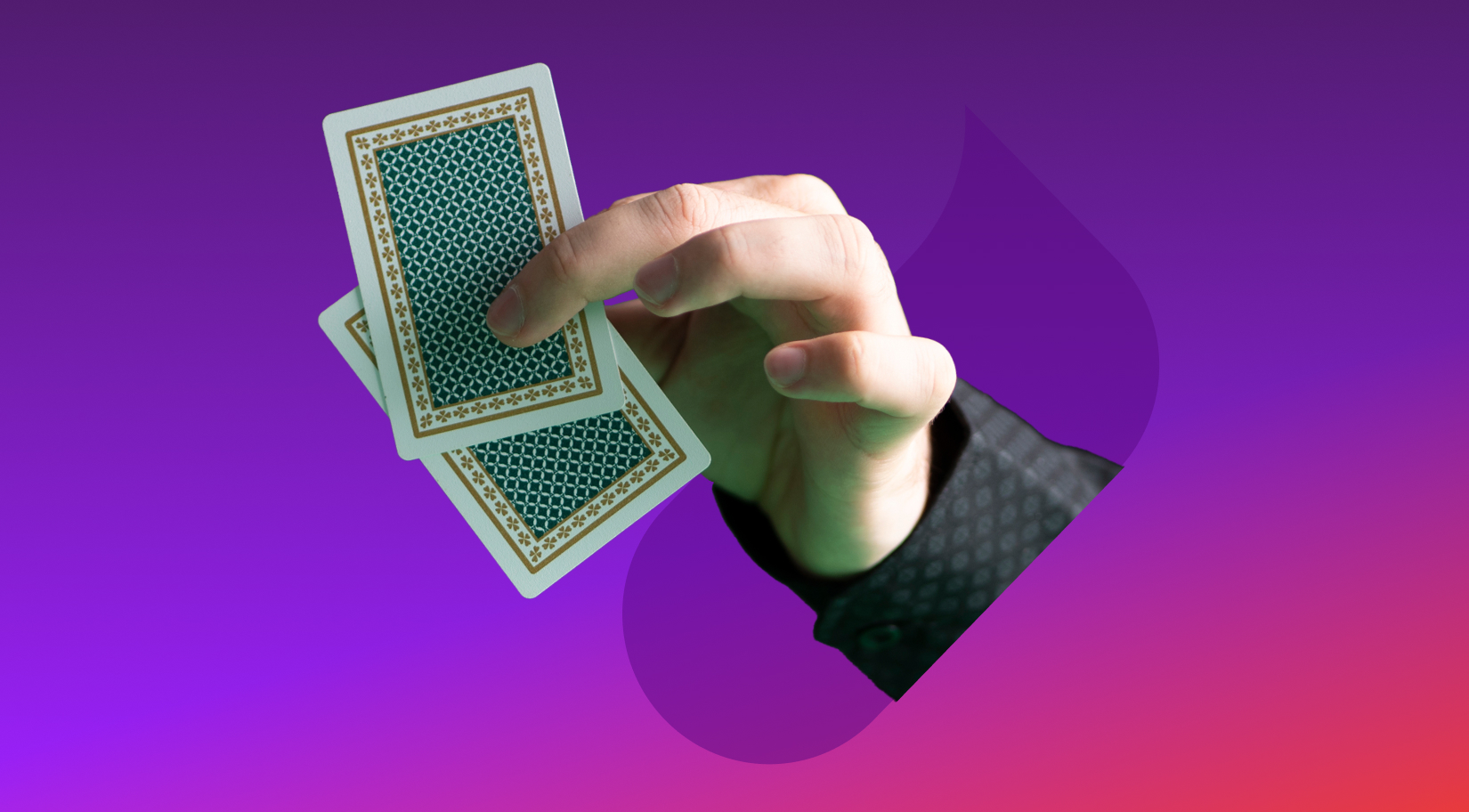Part of the blackjack strategy is the surrender option. You may be wondering, what is surrender in blackjack? It is where a player decides to fold their hand to get half of their original bet back. The option of taking a 50% loss mitigates the risk of a full 100% loss on the hand.
If, for example, you have a weak hand after the opening two cards, then surrendering instead of pushing on can be an option. Once you have called a surrender, you are removed from the round of play.
But when is the right time to surrender during a hand of blackjack? There are two options: an early surrender or a late surrender. So, before jumping into a hand of blackjack, check out the rules at the table and read our guide on everything you need to know about blackjack surrender.
When should you surrender in blackjack?
The timing of surrendering in blackjack isn’t too complicated, and in fact, there are not too many scenarios in which it is going to be active. However, it’s good to know that the option is on the table, and usually, this is when a player has been dealt one of the weakest opening hands.
It’s generally considered that if a hard (no ace) 15, 16 or seven has been dealt, then surrendering becomes viable. However, it will also depend on what the dealer has on their face-up card. If this is a nine or above, then in most cases, the player should surrender.
An exception is hitting on a 15 if the dealer has nine. If a dealer has seven or fewer on their face-up card, then there’s no need to think about the blackjack surrender move. As to be expected, percentages are heavily involved in knowing when to surrender.
Hitting on a 16, for example, has a 61% chance of going bust, while a dealer sitting on a 9, 10 or ace has a 57.1% chance of finishing with a hand between 18 and 21. From a hand of 15, there’s a lower probability of going bust but just a very slim 15.3% chance of finishing with 20 or blackjack. It’s always a matter of considering what your cards are and what is sitting right there in front of the dealer.
Types of blackjack surrender moves
Early and late surrender strategies do differ, so it’s a good idea to be familiarised with the one you are likely to play the most.
The surrender is one of five moves you can make in blackjack:
- Surrender – Folding the bet for a 50% loss.
- Split – Being dealt an opening double allows you to split and play two hands.
- Double – Doubling your bet to increase its value in the middle of a hand.
- Hit – Receiving another card.
- Stand – Standing on a total without going over 21.
If you are physically in a casino, then drawing a straight line with your hand behind your cards is the accepted sign, but it’s good to also give verbal confirmation.
Early surrender
The advantage of an early surrender is that it will lower the house edge fractionally. With your opening cards and the dealer’s face-up card in play, this is a time when an early surrender can be called for in blackjack.
It’s called ‘early’ because it comes before the dealer has checked their hold card to see whether they have blackjack. If you have been dealt a hand of 16 and the dealer has a face-up card of an ace, then the odds are against you, so it can be a good time to surrender before the game proceeds.
Late surrender
The late surrender in blackjack takes place after the dealer has checked for blackjack. The late surrender is not quite as statistically advantageous to the player as an early surrender (between 0.05% and 0.1% less), but it can still be worthwhile.
If your opening cards tally 16 and the dealer has checked but doesn’t have blackjack, then you can decide from that point whether to push on or surrender. If the dealer has 21, then the game never gets to the position of you having a blackjack surrender option.
With late surrender, players should surrender hard 15 or 16 against the dealer’s 9, 10 or ace and soft 17 or 18 against the same cards.
Exceptions to blackjack surrender
Should a player always call for a surrender? No. Outlined above are the common situations to do so, but some hands are an exception to the rule, and you never want to surrender on:
- Double 8
- Soft 15 or 16
Surrendering is typically not recommended when the player has a strong hand total that has a good chance of winning against the dealer’s potential hand. A soft blackjack hand contains an ace, and therefore, regardless of what you receive when you hit from that position, you are not going to go over 21. As for the pair of eights, those (like a pair of aces) are always split in a blackjack strategy.
Note that other game rules, particularly whether the dealer stands or hits on 17, will shift probabilities slightly. When a dealer hits on 17 as opposed to standing, for example, the house gains an edge against the player.
Advanced players who employ card-counting strategies may find exceptions to surrender based on the count and the specific composition of the remaining cards in the deck. In such cases, surrender decisions may deviate from basic strategy charts.
What is the difference between the insurance bet and surrender in blackjack?
The insurance bet is a side bet on whether the dealer has a natural blackjack when their upturned card is an Ace, while surrender allows players to forfeit their hand and recoup half of their bet when they believe their hand is weak compared to the dealer’s upturned card.
In the centre of the blackjack table, between the dealer and players, is an insurance arc, which typically pays out at 2:1 odds. This is a form of side bet where you can insure your hand against the dealer getting 21. It’s typically only played if you are extremely confident that the dealer will be hitting blackjack.
The insurance requires an additional sum to your stake. If you bet £10 and get dealt a ten and an eight, while the dealer’s face-up card is an ace, you statistically aren’t in a good spot. If the bet is insured with a further £5, and the dealer only turns over a four card, for example, then the insurance stake is lost, and the game continues.
If the dealer had turned over an ace, you would have been paid £10 on the insurance at 2:1 but lost the original stake, so you would have broken even. Blackjack strategy generally dictates that this is one to avoid, as the house gains a significant advantage on the insurance, and the blackjack surrender is the better option.
Do most blackjack tables offer surrender?
No, it’s not very common. The availability of the surrender option at blackjack tables can vary depending on the specific casino and its rules. It’s thought that only a small percentage of physical casinos offer blackjack surrender rules. At online casinos, it’s a little more common, but you may still have to search around to find tables that have it.
Conclusion
Now you know the answer to the question, what is surrender in blackjack? Studying it can be an asset to your strategy. If you encounter it, you will be armed with the information to potentially gain a little advantage against the house. While not as widely available as other rules, such as doubling down or splitting, surrender can be a valuable tool for mitigating losses in certain situations. Familiarising yourself with the best probabilities of when to use it is key.
For players seeking to optimise their gameplay and minimise risk, blackjack surrender offers an opportunity to salvage half of their bet when facing particularly unfavourable hands. However, it’s important to note that surrender is not universally offered and may vary depending on the specific casino and its rules.
Play Online BlackJack in our Live Casino here




 Lee Jackson
Lee Jackson 